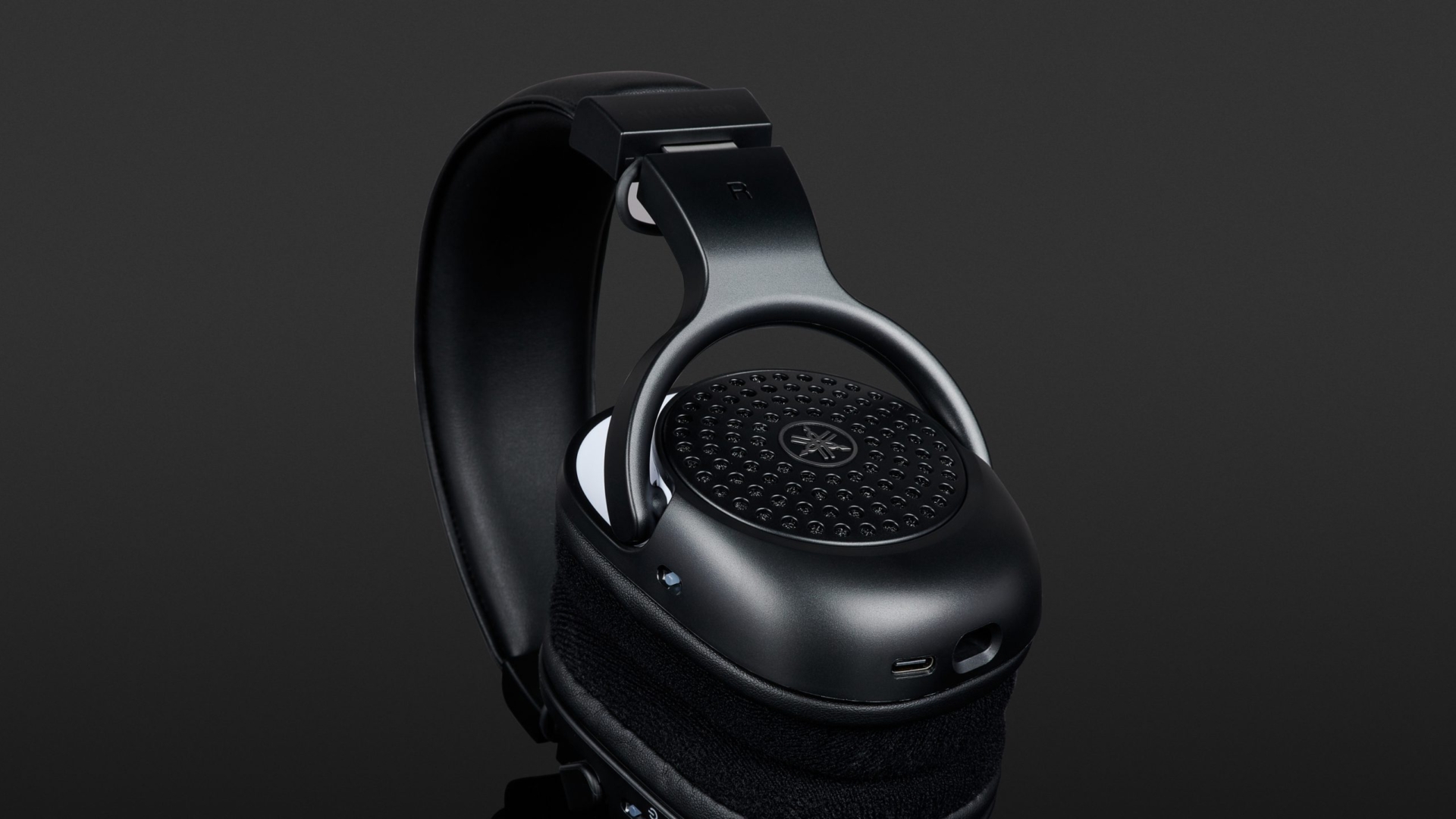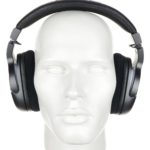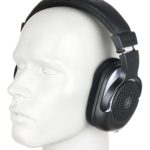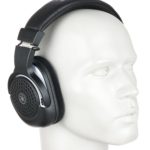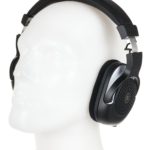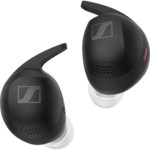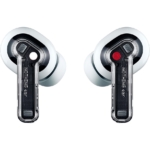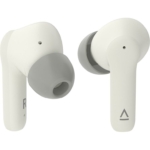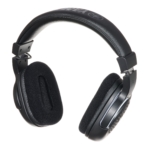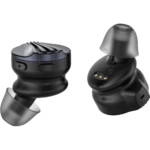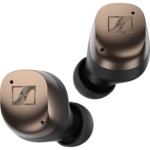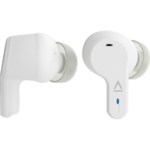Yamaha’s YH-WL500 are explicitly aimed at musicians. These open headphones combine Bluetooth playback from a smartphone with a fast, dedicated second wireless link for your instrument, which enables wireless rehearsal without disruptive latency. Not necessarily cheap, but pretty clever!
- Musician-friendly concept with low latency
- Sound quality
- No high-quality codecs
- No built-in microphone
- No automatic pairing with test device
As they are the world’s largest manufacturer of musical instruments, Yamaha has developed the YH-WL500 wireless headphones which are explicitly aimed at musicians. We find out what’s so special about them here …

Wireless headphones are undoubtedly practical and there are plenty of reasons why they are particularly popular. However, in addition to the need for battery-powered electronics, they have another disadvantage – their latency. This is the delay, caused by numerous buffer stages, that occurs between sending the audio signal from the sound source via Bluetooth and playing it back on the headphones.
In fact, such a delay is generally not a problem when listening to music alone, as the listener plays a passive role. A problem only arises when it comes to synchronising with other electrical, acoustic, visual or even haptic elements. For ,example: as viewers, we perceive a time offset between the soundtrack and the image output of a film as confusing because our senses do not perceive related events at the same time. So, when interaction with the playback medium is required, this becomes really annoying. When playing video games a fast reaction time to the audio-visual presentation is a prerequisite for enjoyment.
The same also applies to musicians, as they listen to and play their instruments in interaction with other musicians or a playback. This also means that they need to be able to control their own signal as directly as possible in the form of a monitor signal. Any delays here are completely undesirable.
In practice, most musicians find delays above 10ms annoying. And if they are particularly sensitive, then they will have problems with values above 5ms. Unfortunately, a typical Bluetooth wireless link operates with values of 30ms upwards, depending on which smartphone is being used, so Bluetooth is not great for some applications.
Concept of the Yamaha YH-WL500
The idea behind the YH-WL500 is to wirelessly transmit a wired signal source from a musician to the headphones with minimal delay and mix it with Bluetooth playback to create a musical interplay. The underlying technology was developed in collaboration between Yamaha and Line 6, an affiliated company with years of experience in wireless transmission for professional audio applications. In practice, the YH-WL500 pairs with your smartphone, which delivers the playback via a conventional Bluetooth connection. In contrast, the instrument signal is transmitted via a dedicated 2.5 GHz wireless link with 24-bit resolution, significantly lower data compression and a more manageable range of six to seven metres. Yamaha specifies a value of less than 4ms for this transmission, which allows a musician to hear themselves in real time, so to speak.
Construction of the Yamaha YH-WL500
These headphones are well-made with a robust black over-ear plastic construction and white decorative accents. Their rasterised, length-adjustable headband is padded with artificial leather, while the swivelling and easily rotatable earcups are made of fabric-covered memory foam. The result is a comfortable fit with sufficient contact pressure to minimise slippage.
The on/off switch is on the edge of the left earcup, with the pairing button and a rocker switch for level control. Below these, you can find a mini jack socket, which enables the option of wired operation. A USB-C charging port and a dedicated charging port for a docking station are located on the right earcup.
The latter is an indispensable part of the overall system, as it functions as a charger with its own USB-C power supply unit, as a transmitter and as an interface for the musical instrument, which is connected at the rear via a stereophonic mini jack socket using the adapter cable that is supplied – great for space-saving, but somewhat irritating, as musicians tend to use 6.3mm jacks. The input was suitable for signals with line level or from headphone amplifiers; in my case, from a Boss GT-001 amp modeller.
In principle, you can connect additional pairs of headphones of the same type to the dock in order to create a shared monitoring situation for several musicians. However, we were unable to test this function because no second pair of headphones was available. Individual YH-WL500 headphones were not yet available without a dock. Finally, the headphones and dock featured coloured status LEDs and supported voice messages.
Back to the headphones: The semi-open design used dynamic drivers with a diameter of 40mm. We were slightly disappointed with the Bluetooth wireless link for playback, which was based on the old 4.2 protocol standard and used the basic SBC codec, which was not in line with the price range and was certainly not state-of-the-art
Yamaha YH-WL500 in practice
The high level of wearing comfort goes hand in hand with quite good isolation from ambient noise. Conversely, the sound path was not completely blocked by the semi-open design, meaning that the headphones we tested were not silent, especially at higher levels. This was not favourable for the person sitting next to you nor for making microphone recordings. However, the YH-WL500 delivered a more open sound reproduction and was less tiring for the user during long listening sessions than a closed headphone solution would have been.
The general advantages of wireless headphones for musicians were quickly apparent. Musicians usually have an instrument in their hands and are often on the move. Depending on the instrument, cables can get in the way.
But let’s get to the point: The idea of the YH-WL500 turns out to be a practical solution for musicians. Your smartphone delivers almost any playback via Bluetooth, for example, from a streaming provider such as Spotify or Tidal. The system-related latency is not an issue. An instrument signal is different: it is transmitted simultaneously to the headphones in parallel without any disruptive latency. It provides the musician with a monitor signal so that they can play along with the playback. Thanks to the stereo playback and the instrument playback, this not only sounded great but also felt “right”. In addition, the rehearsal situation was wonderfully inspiring thanks to the lack of cable interference, especially when playing electric guitars.
The only thing I missed was a convenient level control on the dock to proportionally mix the two signals. Instead, you have to make do with the level control on the respective signal generators. The runtime of these headphones was ultimately around nine hours, with a full charging cycle taking just under three hours.
Another snag: I had problems with automatic pairing with a smartphone. I often had to repeat the process after switching on the YH-WL500 because the previous connection was not re-established. Once the connection was established, however, it turned out to be completely reliable.
How do the Yamaha YH-WL500 sound?
With a recommended retail price of 369 euros, you might expect a lot in terms of sound and indeed, the quality offered by the YH-WL500 when in Bluetooth playback was quite convincing despite codec restrictions, albeit without reaching audiophile standards. The drivers delivered a full and powerful sound image with high level reserves and a balanced frequency response. Bass was contoured and reproduced with comprehensible tonality right down to the lowest registers. The low bass range was easily audible, somewhat restrained, but conversely never disturbingly excessive in level.
In the all-important mid-range, voices, both male and female and acoustic instruments were reproduced with a natural timbre. Even electronics and distorted guitars sounded consistent and never became distracting – assuming you are listening to a good production. The headphones also delivered a musical combination of appealing detail resolution and brilliance in the treble range, which ensured fast transient reproduction and a lively, wide stereo panorama. Finally, you can also look forward to good dynamics and spatiality. There was no doubt about it: listening pleasure can be experienced even when just listening to music. The YH-WL500, therefore, definitely receive our recommendation for music consumption – preferably within the four walls of your own home due to their semi-open design. For mobile use, these headphones lacked a built-in microphone, meaning that they were not suitable for making phone calls; all sounds were lost except for the ringtone.
The instrument signal was transmitted quickly and the sound was neutral. It was audibly superior in quality to the SBC-coded Bluetooth wireless link, so Yamaha scored points here not only for fast transmission but also for sound integrity. Incidentally, there was nothing to stop you from feeding the source signal directly into the dock via the mini-jack input purely for musical enjoyment.
Conclusion
With the YH-WL500, Yamaha offers a real specialist tool. The device we tested turned out to be powerful-sounding open Bluetooth headphones with an unfortunately outdated codec. However, the real selling point was the possibility for musicians to add the sound of their own instruments to the music playback with minimal latency, thus enabling a comfortably silent rehearsal. The wireless version of this solution is virtually unrivalled in the market. The extent to which this convenience justifies the sales price depends not only on your budget but also on your instrument.
Technical specifications
- Ear couplingOver-ear
- Typesemi-open
- Transducer principledynamic
- Impedance32 ohms
- Weight without cable315 g
What's in the box
- Transmitter
- USB power supply unit
- Mains plug adapter
- USB cable (50 cm/type A to C)
- Cable with 3.5 mm stereo jacks (2 m)
- Adapter to 6.35 mm
Special features
- BT codecs: SBC
- BT version: 4.2
- BT profiles: A2DP, AVRCP









